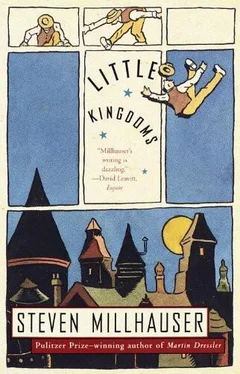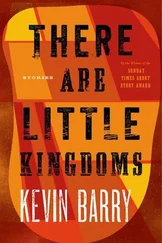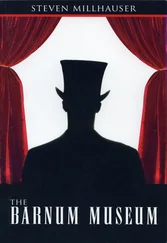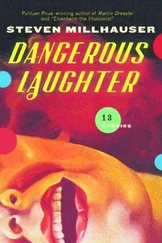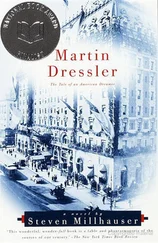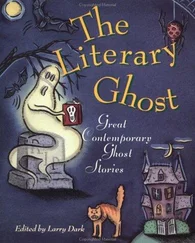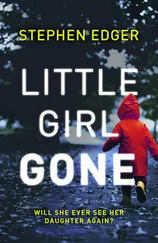He was moving ahead: by midwinter he had completed more than 20,000 drawings. It took him another month to complete the difficult episode of the vanishing palace, the last adventure before the eruption onto the dark side of the moon. The palace, located on an island in the river that separated the white side of the moon from the dark side, had the property of fading away as you advanced through it. It was necessary not simply to invent a detailed dream-palace, a palace with long corridors and arched doorways, soaring halls and mirrored chambers, but also to make drawings that were lighter and lighter until the passageway or chamber seemed to fade away — and turning his head the boy saw, in perfect perspective, another detailed and alluring corridor, which began to fade as he passed along. At the end of the episode the entire palace faded away, like the Cheshire cat, leaving the boy and the monkey alone in blank whiteness. The monkey, removing a piece of charcoal from his pocket, quickly drew a spit of land, a rowboat, some waves; and as the monkey rowed them across the river toward the dark side of the moon, the boy looked over his shoulder and saw, clearly in the distance, the palace on the island, sharp and clear, growing smaller and smaller.
But it was the dark side of the moon that drew on Franklin’s deepest energies, for here he rigorously released himself into a realm of absolute cartoon freedom. Although he continued to draw in India ink on rice paper, he imagined the images in reverse, for he planned to instruct the cameraman to make a negative print, in order to create the effect of white drawings on a black background. In this black world the hero was to undergo a series of phantasmagoric metamorphoses, of dream dissolutions and hallucinatory recombinations. A radical shift in drawing style indicated the change: gone was the intricate perspective background with its preference for the unusual angle, and in its place was a flat picture plane with deliberately simplified figures. The instant the boy set foot on the dark side of the moon he began to unravel, until he was a single wavering line that gradually assumed the form of a spinning top. The top became a clown’s yawning face; inside the yawn was a fantastic garden, where the boy reappeared and was at once transformed into a tree hung with many apples, each of which gradually assumed the shape of his head. The faces grew bodies, and a crowd of boys ran off in many directions as each turned into a different animal ridden by a monkey; the animals collided and became a boy surrounded by tall, wavering, menacing figures, who pursued him into a black rock that contained a cobwebbed parlor. Slowly the parlor became an amusement park where the carousel horses grew larger and larger and began to eat the roller coaster, the fun house, the Ferris wheel until there was nothing left — at which point the fat horses melted together and became an open umbrella, beneath which the boy and his monkey floated down, down, down — and as the episodes of metamorphosis multiplied, becoming more dangerous, more sinister, incorporating apparently random images like toasters, icebergs, and blast furnaces whose shapes were cunningly drawn from earlier parts of the cartoon, beyond the edges of the paper Franklin noticed an occasional hard image that swiftly melted away: an edge of window, the hand of Mrs. Henneman holding out a glass, the yellowing slats of the partially open Venetian blinds, but already he had sunk back into the dark side of the moon. In a narrow valley he was surrounded by mountains with mouths, somewhere a phone was ringing, his temples were about to burst. A moon bird melted into a river of demon birds. “You have to decide,” someone was saying, “whether to build or buy,” and when he looked up he saw his own face reflected in a dark train window, through which he saw a passing landscape. Slowly the landscape became a sewing machine that stitched the silently screaming boy onto the sleeve of a shirt. The last snow melted under the spirea bushes by the steps of the front porch, green leaves hung from the maples, and one rainy hot day Franklin saw that he was done. Somewhere the notes of a piano sounded: Stella practicing. A drop of sweat trickled along his cheek. Several sequences needed to be reworked, the voyage was riddled with minor flaws, but he could fix things in a month or two. He wanted to hand it over to the cameraman, he wanted to throw it on a white screen in the dark of his study; and a day came when Franklin began carrying boxes up to Vivograph, which still operated in its old offices in the arcade building, but with an entirely new set of faces.
That evening he felt heavy-limbed and light-headed and went to bed early. When he lay down his heart began to beat very quickly, as if he were running; and he lay alert and exhausted as moon drawings streamed in his mind, with their two peg holes at the top, their numbers in the lower right-hand corner, their hundreds of thousands of carefully drawn little black lines.
As he waited for the drawings to be photographed, he began to fear that something had happened to them, something Vivograph was attempting to conceal. He saw his 32,416 drawings fluttering slowly to the floor, a snowstorm of spilled pages, each flake slightly different from the others; he saw a black footprint, like one of the footprints in a dance manual, stamped in the center of each clean white moonscape; and he saw, rising along the sides of high piles of crisp white paper, little red-and-yellow flames darting higher and higher.
The day came when his reels of film were ready. At once a new worry sprang up in him: suppose Kroll were to discover what he had done? The revelation of an immense secret life, of vast energies directed away from the World Citizen , could strike Kroll only as a criminal violation of their agreement; punishment would be harsh and swift. Caution was crucial. At Vivograph a man with a sharp chin and thin pink lips kept plying him with questions, but Franklin, slyly avoiding his gaze, said that he knew nothing about it, he was just there to pick up the cans of film and the boxes. At home he decided to make it a surprise for Stella. He had rented a projector earlier in the week and purchased a portable screen attached to a collapsible tripod. Mrs. Henneman served dinner and left at seven-thirty; she would return at seven-thirty in the morning. “A good night to you, Mr. Payne,” she said, and he was startled: surely she couldn’t know about the trip to Vivograph, the night’s screening? “That’s all right, Mrs. Henneman,” he said, waving. “I’ll be just fine. Don’t you worry about me.” In the kitchen he played a game of Parcheesi with Stella, who liked each of them to take two colors. At eight-thirty she went upstairs to get ready for bed and Franklin crept up to the study to set up the screen and load the first reel in the projector. By the time she had finished brushing her teeth he was back in the parlor, pacing. In Stella’s room he read to her a chapter of Anne of the Island , then closed the book and said, “I have a surprise for you: upstairs.” He placed a finger over his lips. Stella sat up at once, her dark hair falling over one shoulder, her lips parted slightly, her large, dark eyes grave in their excitement.
She followed him up the stairs and entered the tower room quietly, taking in the projector and screen without a word. On one side of the projector Franklin had placed his leather desk-chair, on the other Stella’s small wooden chair from her old worktable. She sat down quietly on the childish chair with her hands in her lap, then slid forward until her shoulders pressed against the chair-top. Raising a hand she began to wind her hair round and round a finger. Franklin turned out the light and started the projector. There was a flickering blankness on the screen, then a briefly flashed numeral J, a few scratchy lines, and suddenly the title, in carefully drawn black letters. Franklin shifted the projector slightly; the cartoon began. In the darkroom he had stared at the white paper, waiting. From the depths of whiteness black shapes had come. But the pictures had not moved. On the white screen the black pictures moved — the old mystery made new. Dark and light: night and moon: dark theater and bright screen. In the dark he could see the shaft of light thrown by the projector. It looked like a moonbeam in some old painting of a forest. It struck him that the projector beam was the true modern moonbeam, the ray of light from a new realm of mystery and enchantment that outmoded the poor old moon. And it was good: he saw that it was good, that he hadn’t lost his touch. Stella sat rigid, spellbound, tense with attention.
Читать дальше
